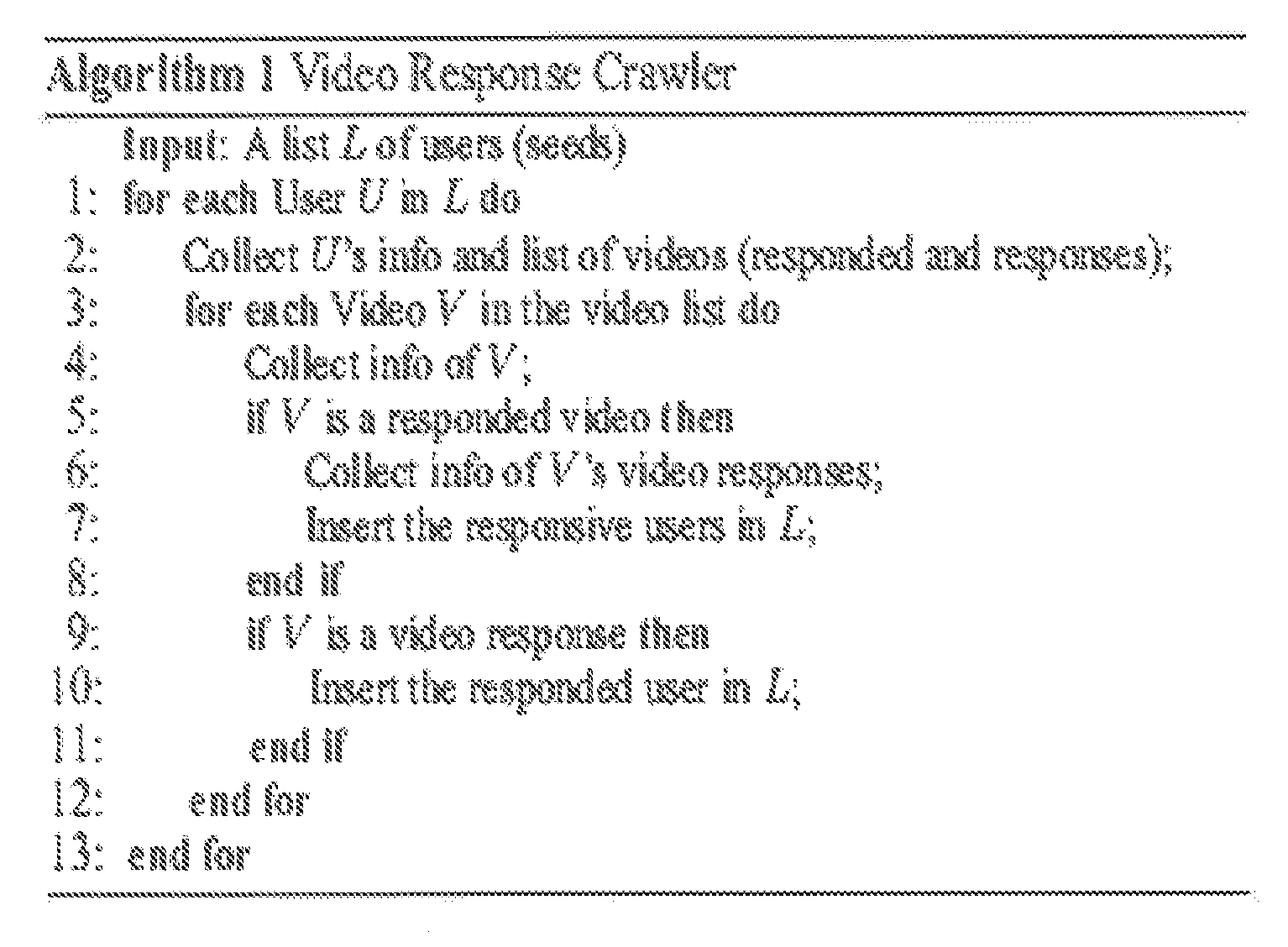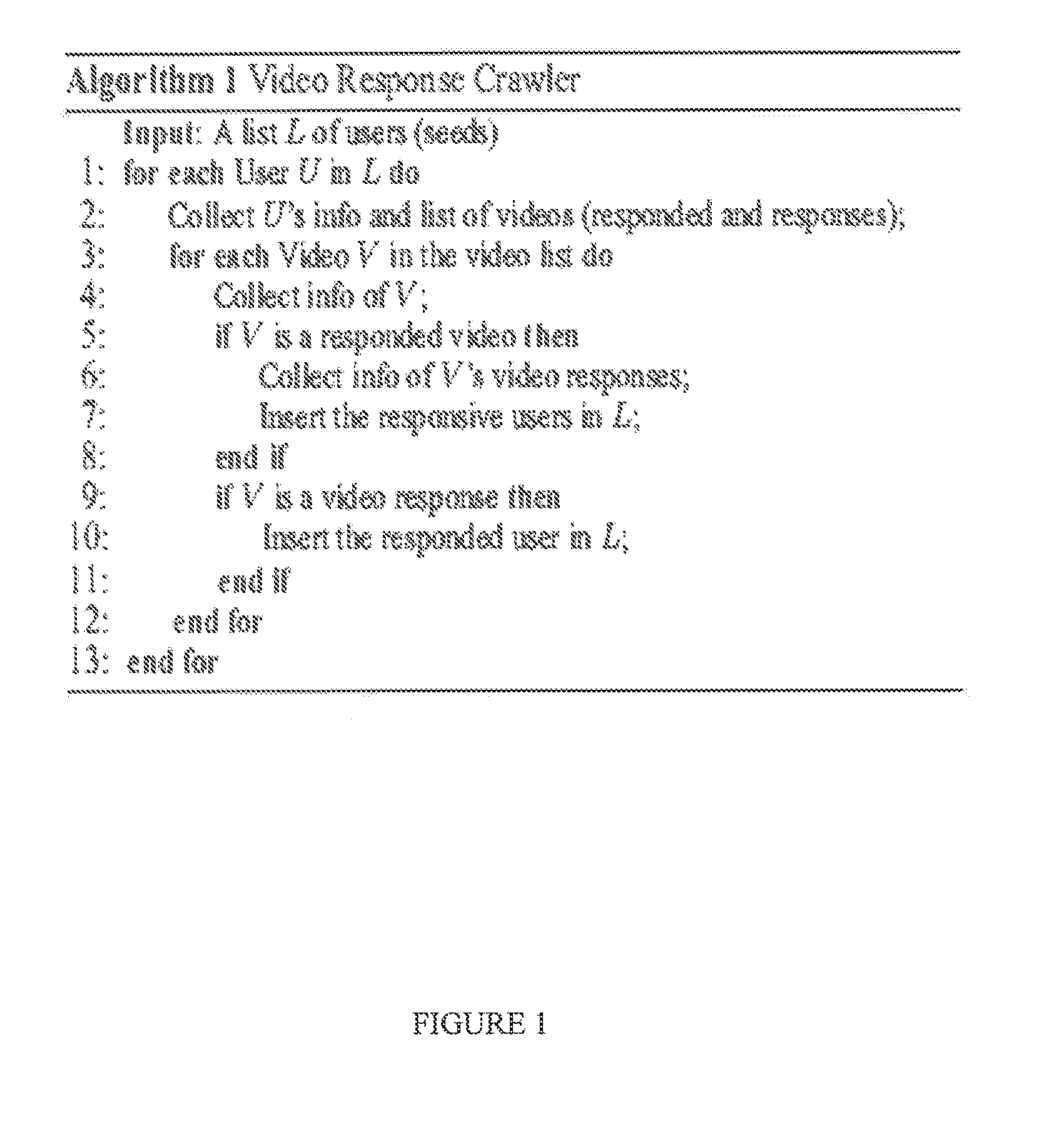Methods for detecting spammers and content promoters in online video social networks
a social network and spammer technology, applied in the field of video spammers and content promoters detection in online video social systems, can solve the problems of consuming system resources, especially bandwidth, and compromising user patience and satisfaction, so as to improve the likelihood of the response being viewed by a larger number of users, improve the rank of the video topic, and facilitate content location
- Summary
- Abstract
- Description
- Claims
- Application Information
AI Technical Summary
Benefits of technology
Problems solved by technology
Method used
Image
Examples
Embodiment Construction
[0016]In order to evaluate the proposed approach to detect video spammers and promoters in online video social networking systems, it is necessary a test collection of users, pre-classified into the target categories, namely, spammers, promoters and, in lack of a better term, legitimate users. However, no such collection is publicly available for any video sharing system, thus requiring the building of one.
[0017]Before presenting the steps taken to build the user test collection, it is introduced some notations and definitions. It is noticed that an online video is a responded video or a video topic if it has at least one video response. Similarly, we say a user is a responsive user if he has posted at least one video response, whereas a responded user is someone who posted at least one responded video. Moreover, the spammer is a user who posts at least one video response that is considered unrelated to the responded video (i.e., a spam). Examples of video spams are: (i) an advertis...
PUM
 Login to View More
Login to View More Abstract
Description
Claims
Application Information
 Login to View More
Login to View More - R&D
- Intellectual Property
- Life Sciences
- Materials
- Tech Scout
- Unparalleled Data Quality
- Higher Quality Content
- 60% Fewer Hallucinations
Browse by: Latest US Patents, China's latest patents, Technical Efficacy Thesaurus, Application Domain, Technology Topic, Popular Technical Reports.
© 2025 PatSnap. All rights reserved.Legal|Privacy policy|Modern Slavery Act Transparency Statement|Sitemap|About US| Contact US: help@patsnap.com



